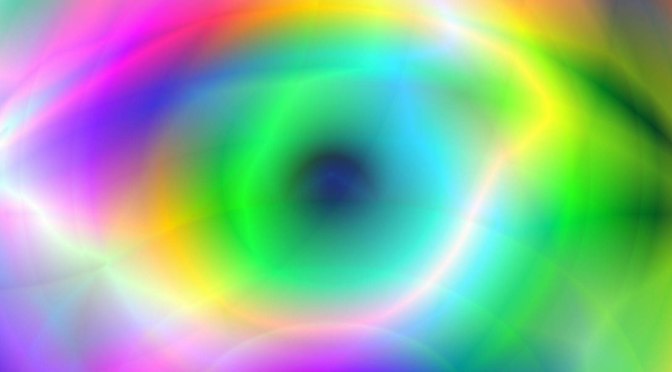How ‘real’ the things we perceive are has always been a big philosophical questions. How can we really know if what we see if truly there, and if what we see is the same as what others see? We can’t, really, but on a day-to-day basis most people end up going along with the idea that what they see must be real – it all gets a bit complicated otherwise.
One of the questions which often gets thrown in with this lot is the ‘Do other people see the same colours as me?’ question. Colour is something which is a matter of perception – it isn’t an exact quality of nature, it’s do to with the wavelengths of light that we perceive, and how we perceive them. Colour is a property of our brains, not the outside world.
Okay, but, you know, at the very least, we do have something that we can use to signify colour in a scientific way, right? Well, kind of. As I mentioned above, in science, if you’re talking about ‘red’ light, you’re talking about light with wavelength of about 650nm; ‘green’ light has a wavelength of about 510nm; and ‘blue’ light has a wavelength of about 475nm. All in all, the colours we all see range in wavelengths from about 400nm to 700nm, with red being the longest, and violet being the shortest, as can be seen on the spectrum below.
Have a good hard look at that spectrum. See anything strange? I doubt it, but if you looked good and hard, you might notice something. Pink is missing. Now, I’m talking about true pink, that deep magenta shade, not the baby pink you get from mixing together red and white. And no, it’s not hiding anywhere – it isn’t on the colour spectrum. There is no wavelength that corresponds to pink.
So, how do we see it?
Well, first let me fill you in on something. All the colour in the spectrum have a complimentary colour, an ‘opposite’, so to speak, which lies an equal (but opposite) distance from the center (or green bit) of the spectrum. If you look at a dot of colour for a while, then look at a white piece of paper, you should see that complementary colour. As green is in the middle, it doesn’t have a complimentary colour – both red and violet are an equal distance from it.
So, when your eye detect a mixture of ‘red’ and ‘violet’ wavelengths, it has two options as how to form a colour. It can either try and ‘average’ out the wavelengths, giving you green (which doesn’t really resemble red or violet at all), or it can create a ‘complementary’ colour to green, and mix the red and violet together. And tada, you have pink!
So, well, pink doesn’t exist. Or does it? In reality, pink isn’t the only colour not to appear in the spectrum (I mean, there’s no mauve or brown, for instance), and there’s even talk that it’s possible to see strange, bizarre colours such as reddish greens, and yellowish blues. At the end of the day, every single colour we see is a kind of optical illusion, as they only come into existence within our brains. Still, I think that pink has even less claim to validity that most colours, given it doesn’t have a representative wavelength on the light spectrum. So, the next time someone compliments you on the brilliant colour of your magenta suit, just tell them that it’s an optical illusion.
Well, it’s been an age since I last posted, and I’m truly sorry. Things got hectic, and I got caught up in other research (which I hope to post on here at some point) and general life. Back to normal soon I hope however.
I was first informed about the invalidity of pink through a brilliant Cracked article (which now, somehow I can’t find), and found out a little more from the brilliant minds at Scientific America, and also worked out a lot of the bits and bobs through my own scientific education.
Bit of a shout out to my dad – his ridiculously colourful fashion sense has definitely influenced the way I think about pink and other colours. He can be found here (with a ridiculous amount of puns) on Twitter!
“Linear visible spectrum” by Gringer – Own work. Licensed under Public domain via Wikimedia Commons – http://commons.wikimedia.org/wiki/File:Linear_visible_spectrum.svg#mediaviewer/File:Linear_visible_spectrum.svg


